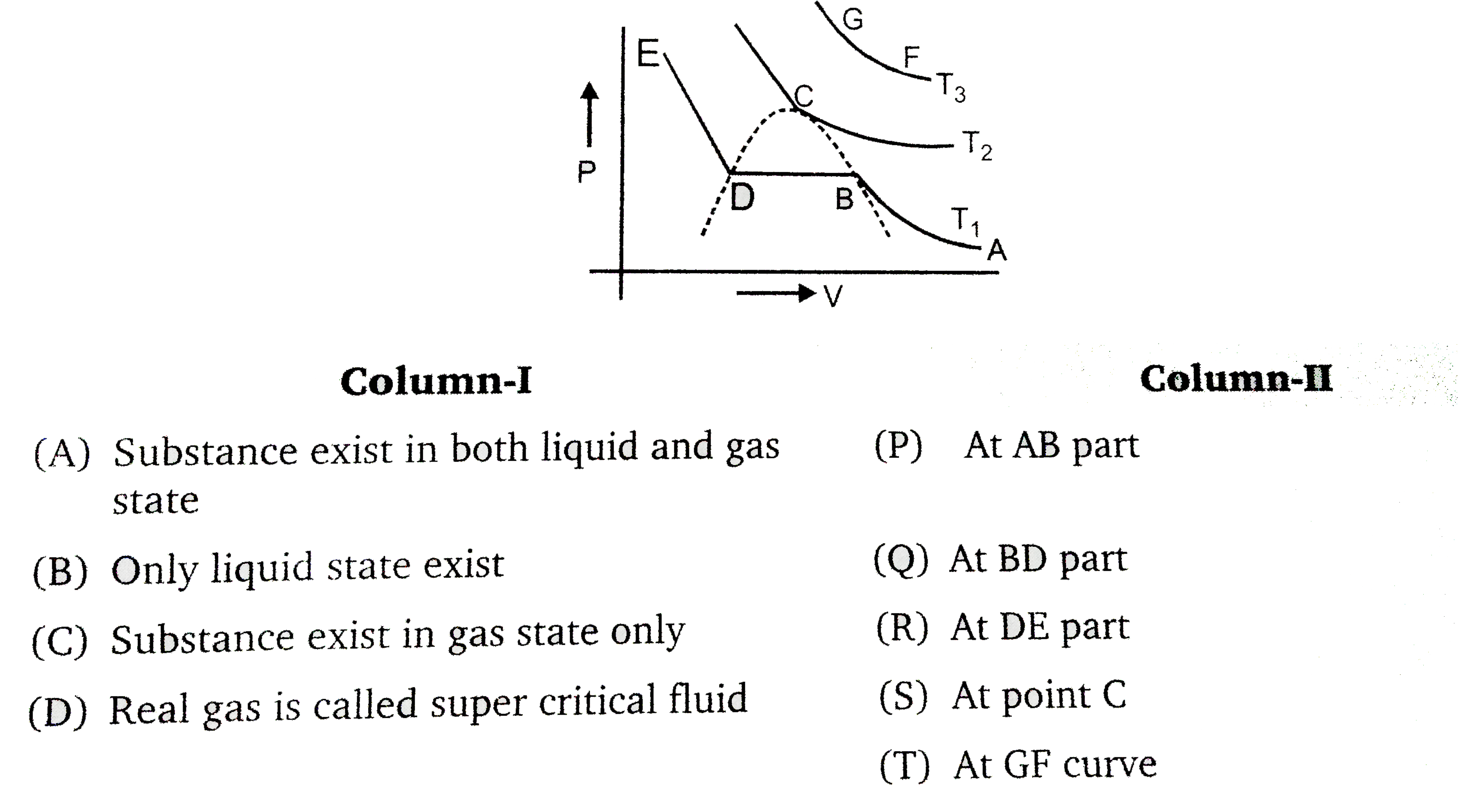Explain about Andrew's Experimental isotherms of CO2 gas.
Text Solution
(i) Andrew's isotherms of carbon dioxide at different temperactures is shown in figure From the plots we can infer the following.
(ii) Atlow temperature isotherms, for example, at 13∘C as te pressure increases, the volume decreases along AB and is a gas until the point B is reached.
(iii) At B, a liquid separates along the line Bc,Both the liquid and gas co-exist and the pressure remains constant.
(iv) The volume range is which the liquid and gas coexist becomes shorter.
(vi) At the temperature of 31.1∘C the length of the shorter portion is reduced to zero at point P.
(vii) The CO2 gas is liquefied completely at this point. This temperature is known as the liquefaction temperature or critical temperature of CO2 at this point the pressure is 73 atm.
(viii) Above this temperature CO2 remains as a gas at all pressure values.

|
Topper's Solved these Questions
- GASEOUS STATEBOOK - SURA PUBLICATIONCHAPTER - GASEOUS STATEEXERCISE - NUMERICAL PROBLEMS
24 Videos
- GASEOUS STATEBOOK - SURA PUBLICATIONCHAPTER - GASEOUS STATEEXERCISE - ADDITIONAL SHORT ANSWERS
33 Videos
- ENVIRONMENTAL CHEMISTRY BOOK - SURA PUBLICATIONCHAPTER - ENVIRONMENTAL CHEMISTRY EXERCISE - 5 MARKS
1 Videos
- GOVT. MODEL QUESTION PAPER - IBOOK - SURA PUBLICATIONCHAPTER - GOVT. MODEL QUESTION PAPER - IEXERCISE - PART-D
16 Videos
Similar Questions
Andrew's worked on a temporary gas (so called at that time) and derived the condition to liquefy the permanent gases (so called at that time)
Andrew studied isotherms of CO2 and obtained the required condition for liquefaction of gas Tgas<Tc (critical temperature) .
View SolutionAndrew Isotherm
View Solution
Knowledge Check
Assertion: Andrews worked on a temporary gas (so called at that time) and derived the condition to liquefy the permanent gases (so called at that time).
Reason: Andrews studied isotherms of CO2 and obtained the required conditions of liquefaction of gas as Tgas<Tc (critical temperature).AIf both assertion and reason are true and the reason is the correct explanation of the assertion.BIf both assertion and reason are true but reason is not the correct explanation of the assertion.CIf assertion is true but reason is false.DIf assertion is false but reason is true.In a isothermal expansion of a gas
Aa pressure remains constantBtemperature remains constantCdensity remains constantDNone of theseIn isothermal expansion of a gas:
Athe kinetic energy of gas molecules remains sameBthe kinetic energy of a gaseous molecules decreasesCpressure of gas decreasesDthe kinetic energy of gaseous molecules increases
During the isothermal of an ideal gas :
View SolutionMatch the correct column from list-1 to list -2 on the basis of following Andrew's isotherm of real gas.

View SolutionDuring the isothermal of an ideal gas :
View SolutionAccording to Andrews isothermals, CO2 gas behaves ideally ______________.
View SolutionAs observed from Andrew's isothermals of CO2, critical temperature of CO2 is _____________ ∘C
View Solution
